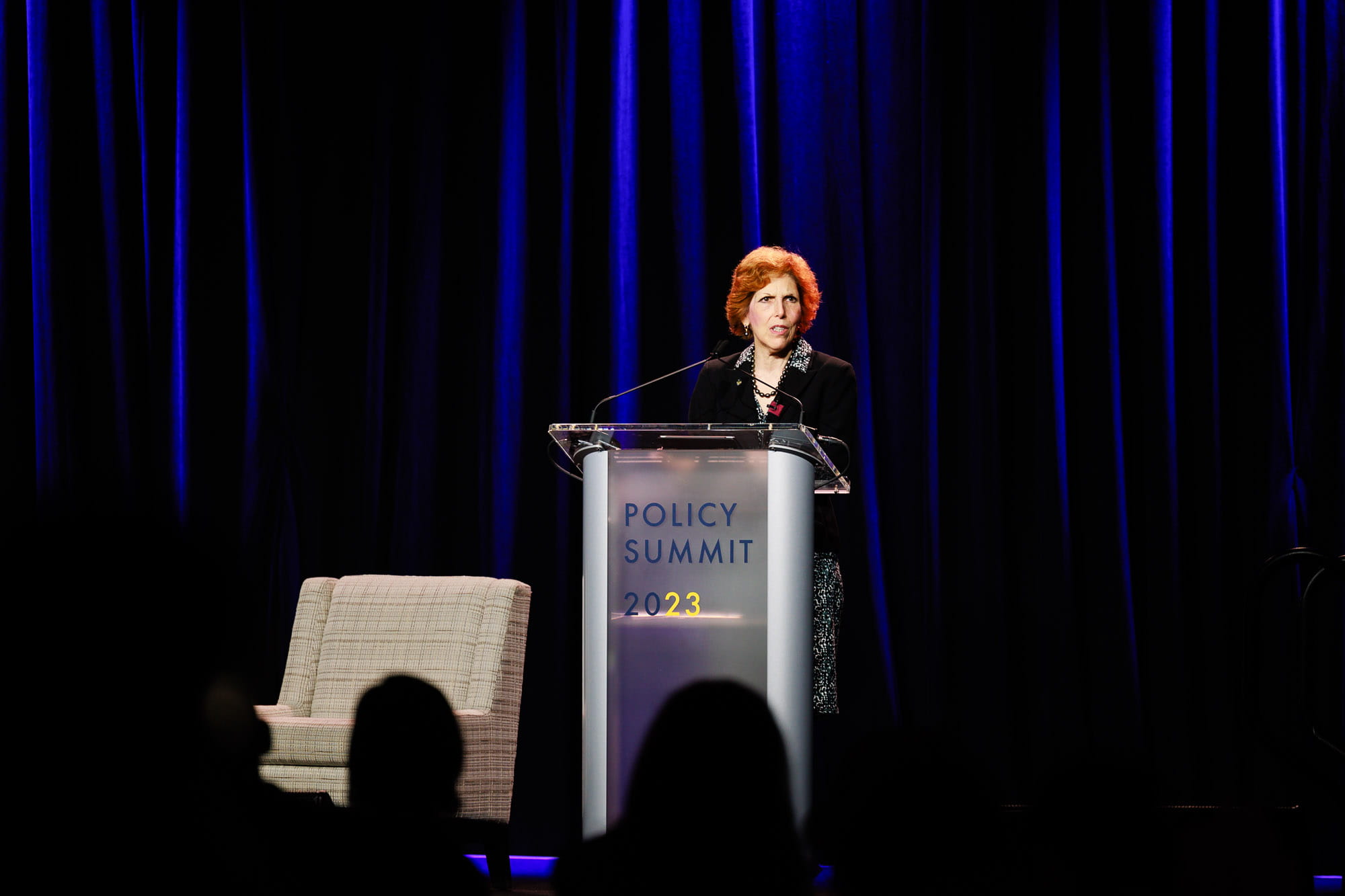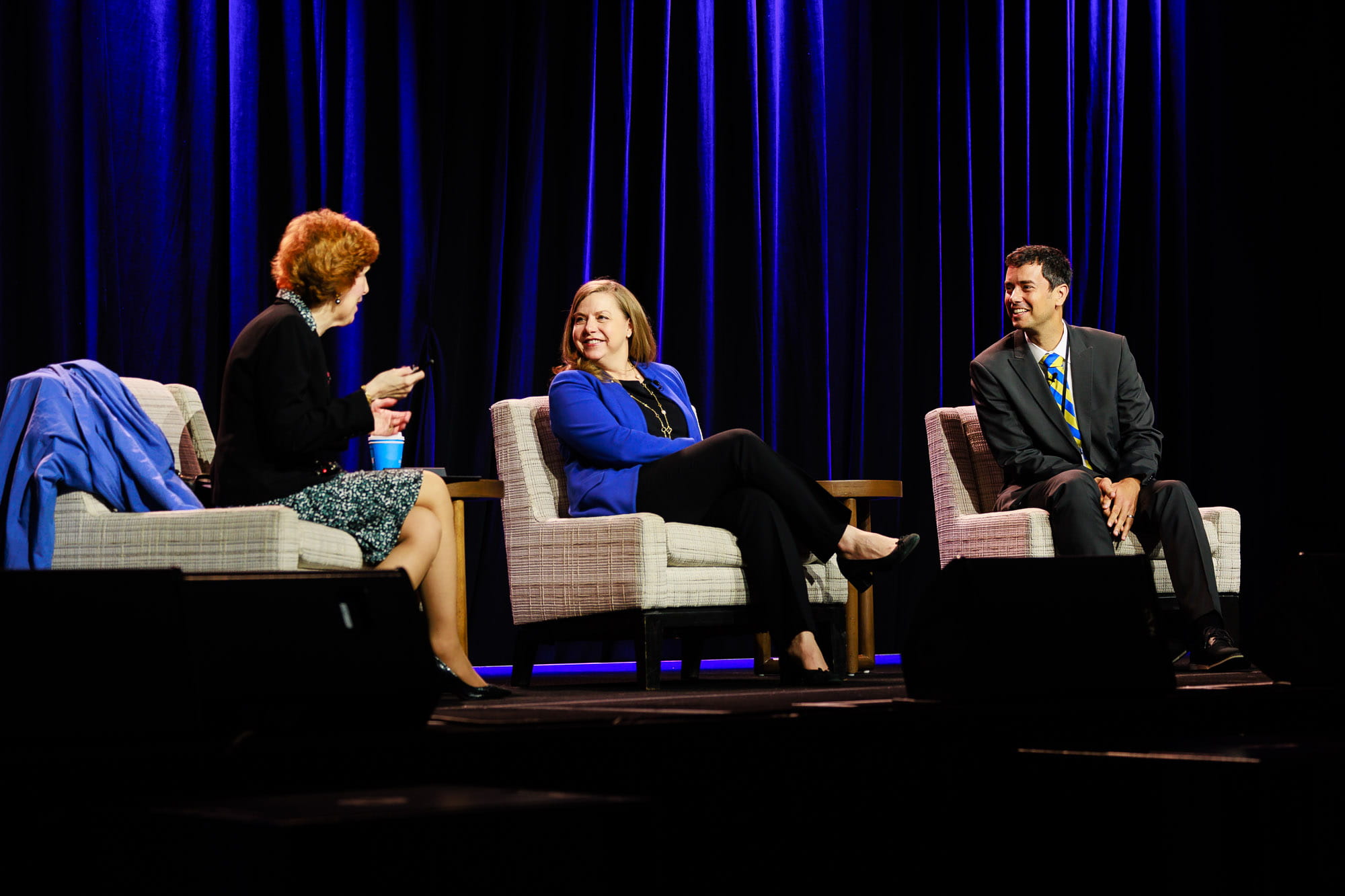- Share
Fed Listens 2023: Transitioning to the Post-Pandemic Economy
In 2019 and 2020, the Federal Reserve undertook a comprehensive, multiyear review of its monetary policy strategies, tools, and communication practices. An important component of that review was Fed Listens, a series of events held around the country that engaged a wide range of contributors—employee groups and union members, small business owners, residents of low- and moderate-income communities, workforce development organizations, community colleges, retirees, and others—to hear about how monetary policy affects people’s daily lives and livelihoods. Since that time, and in recognition of the necessity to engage with people from a wide range of geographies and with a wide range of perspectives, we have broadened the scope of Fed Listens to become an ongoing process of consultation with the public.
On June 22, the Federal Reserve Bank of Cleveland hosted a Fed Listens session at Policy Summit 2023: Communities Thriving in a Changing Economy. Federal Reserve Governor Michelle W. Bowman and Cleveland Fed President Loretta J. Mester asked summit participants to share their insights on how the pandemic experience has re-shaped the economy and the workforce and what challenges and opportunities exist during this transition to a post-pandemic economy. The session was also livestreamed for viewing by the general public. The discussions focused on three questions:
- As the labor market has continued to tighten, to what extent are health concerns and caregiving responsibilities still limiting the hours of work of people who desire to work?
- How are households and communities responding to the higher prices of many essential items, such as food, housing, and transportation? Do you see them adjusting their spending in material ways?
- How do you assess the level of economic optimism in the business or community you represent? What are the most prominent concerns of people in your community at present?
A summary of the discussion follows.
Opening Remarks by Governor Bowman
In opening remarks, Governor Bowman noted the importance of hearing about economic conditions “from those who are actually on the ground and working directly in the economy.…While economic data can tell us a lot, learning about the experiences behind the data helps bring the economic data to life for me and for my colleagues. Through Fed Listens and other engagement with the public, we learn about how Americans are faring in the economy and about how our policy decisions affect individuals, businesses, and communities. Those views help us understand the economy better and enable us to make better decisions.”
Question #1: As the labor market has continued to tighten, to what extent are health concerns and caregiving responsibilities still limiting the hours of work of people who desire to work?
Observations: Caregiving, benefits cliffs, and the burden of being an on-site worker are contributing to the tight labor market.
Caregiving
- Summit participants broadly agreed that caregiving responsibilities were indeed a major contributor to the tight labor market. One participant termed her generation the “sandwich generation” because of their twin responsibilities for their children’s and their parents’ care. In addition, it was noted that a significant percentage of caregivers in low- to moderate-income families also have children with disabilities or special needs, compounding their responsibilities.
- Some participants cited the challenges of increased vigilance at schools to discourage possibly ill students from attending classes, resulting in the need for greater parental flexibility to attend to caregiving; a dearth of childcare centers and childcare providers, potentially related to the relatively low wages prevalent in the field; and an aging population of potential workers that finds it increasingly difficult to care for children and older family members while working.
- Attendees noted the personal price borne by those who remain in the labor market while needing to take care of dependents: they exhaust their PTO and sick time at a fast clip.
- Attendees expressed a growing concern that the expiration of the pandemic-expanded childcare government benefits will further exacerbate caregiving challenges.
Benefits cliff
- The benefits cliff—when an increase in a worker's earned income causes a disproportionately greater loss of critical public assistance—was cited by multiple participants as an underlying factor that is discouraging workers from seeking new or higher-paying jobs. A workforce development professional shared an anecdote about a worker foregoing a 25-cent-per-hour raise because of this issue.
- A nonprofit leader from rural Indiana cited specific benefits cliff numbers for their community: The sustainable income for a family of four is estimated at $45,000 a year, but the loss of benefits occurs around the $30,000 a year mark. This presents a $15,000 gap that needs to be overcome before people are willing to fully participate in the labor market.
- The benefits cliff also limits employers’ flexibility in setting wages because they understand that if they do raise the wages of some employees, those employees will lose access to critical benefits.
On-site work
- Participants pointed to on-site work, including hospitality and public transit, as the tightest markets with the hardest-to-fill jobs. A nonprofit leader from Virginia said, “We know that those individuals who make the least income have the least choice around whether to work from home or not, and they weren't considered essential workers during the pandemic, and they didn't get any special care. They just had to show up or get fired.”
Additional factors that contribute to a tight labor markets
- Other factors causing labor market tightness include sizable segments of the potential work force who struggle with addiction or who were formerly incarcerated. Unlocking the potential of these populations could be one key to addressing the tight labor market, some participants said.
Potential solutions suggested by participants:
- Impact investing—specifically, direct support to childcare centers in regions with strong need—could help families who depend on childcare services.
- Increase training for childcare providers to support children with complex socio-emotional issues.
- When policy decisions are being made, consider including in the conversation more people who will be directly affected—for example, caregivers, lower-income parents.
- A gradual decrease in vital services such as subsidized housing and food stamps, rather than an abrupt cliff, would help people reduce or eliminate their dependance on public benefits.
- One participant suggested more educational and partnership opportunities with employers to educate them about the benefits cliff. Such training may include assisting employers in “asset mapping” to think about how to help their employees overcome the benefits cliff. One challenge has been federal income thresholds and guidelines that have the unintended effect of “keep(ing) people poor.”
Question # 2: How are households and communities responding to the higher prices of many essential items, such as food, housing, and transportation? Do you see them adjusting their spending in material ways?
Observations: The lack of affordable housing looms large; some households are increasingly buying discounted items or relying on food banks.
Housing
- Many participants cited rising housing costs—chiefly rent and home prices—as the most impactful form of inflation hurting low- to moderate-income households and communities.
- As rising housing costs discourage younger (millennial) workers from purchasing homes, they become renters, potentially affecting the attachment of residents to their communities. Higher housing costs can also affect the available workforce in some cities as lower-wage earners are forced to move to lower-cost areas.
- One participant noted a reduction in the number of affordable housing units in the northern Kentucky area, a region where more than 40 percent of families are spending more than 30 percent of their incomes on housing expenses (otherwise known as housing cost burdened).
- Small and midsize communities have been impacted by rising home costs in the form of builders’ choosing to focus on larger markets in which they can charge more for new construction. An elected mayor of a midsize Ohio city also noted the need for support programs focused on not only the lowest earners, but also middle earners to prevent them from being too constrained by their housing expenses.
- As pandemic protections expire, some landlords are becoming more aggressive about evictions—this is a bigger problem in areas with rising housing costs and can often mean people can’t move within their own communities.
Discount substitutions
- Lower-income households are substituting down—that is, turning to lower-cost stores and generic brands. Others are forced to make tradeoffs, choosing between medical, transportation, and housing expenses. In some cases, these trades can impact people’s health; some forego necessary medications, and purchasing less-expensive food may mean purchasing less nutritious food. Notably, adjustments take more time; finding coupons and lower-cost transportation takes more time out of people’s days and may lower their quality of life.
- Some participants observed that rising food costs were leading to an increased reliance on food banks and pantries. One participant noted that two colleges in their area created new food pantries to meet student demand.
- Faced with higher expenses, some workers turn to second jobs, but these can be difficult to access due to inflexible primary work schedules. Some people are turning to “side hustles.”
- Rising transportation costs can lead some people to decide against taking jobs that require a commute, exacerbating the tight labor market in some areas.
- Rising daycare costs, and the lack of tax breaks for families who need to use this care, were also mentioned as an important driver of low labor force participation.
- Some of the impacts of rising inflation have yet to be fully felt because of the continuance of government stimulus and benefits from the pandemic. The second half of 2023 may reveal the full toll of rising housing costs.
Potential solutions suggested by participants:
- Modifying zoning regulations and rental rules could help eliminate barriers to affordable housing.
- Employing low-cost or forgivable financing for neighborhood and low-income-focused developers could increase the likelihood of building affordable housing options.
- One participant cautioned that solutions such as tax credits to builders could have the effect of serving as incentives for large corporations to “take over” communities, consolidating pricing power in some regions, and enabling landlords to raise rents.
- Eviction expungement could help make more people eligible for what affordable housing there still is. One summit attendee said her organization is working with regional housing development boards toward this goal.
Question #3: How do you assess the level of economic optimism in the business or community you represent? What are the most prominent concerns of people in your community at present
Observations: Small business owners are getting by but struggling to do so.
- Uncertainty prevails among business owners, including those in low- to moderate-income communities, particularly around the future availability of appropriately qualified workers.
- One redevelopment leader characterized small business sentiment in his region as “cautiously optimistic” but stressed that small business owners maintain a wary eye toward tightening lending standards, even among lenders with long-standing relationships with their small business clients.
- Entrepreneurs need micro or small loans but can’t access them.
- Some business owners are making payroll by not paying themselves.
- The importance of ownership—including small business ownership—was expressed as a key to helping people gain capital to increase wealth.
Potential solutions suggested by participants:
- Several participants called for more public–private sector collaboration to influence national policymaking. Community-based foundations can be leveraged to unify those who have interest in helping to meet the defined needs of the communities together.
- One participant said, “The current system focuses on creating jobs and enabling people to gain the skills to get those jobs. However, we should not underplay that owning income-producing assets, or not owning, will have a major impact on whether most people will gain enough income to thrive and not just survive.”
Closing Remarks by President Mester
President Mester closed the session by thanking the participants and noting that the conversation would help the Fed to better inform its research and better understand how the policies it controls affect communities. She said, “I want to just emphasize that the work we do at the Federal Reserve really depends on the productive relationships that we have with many of the groups that are represented in this room. My hope is that we will develop those kinds of relationships with you as well, and I hope that for the rest of the Policy Summit, we'll all feel that this dialogue is productive, and we will all work together on fostering a stronger economy and a more inclusive economy.”




